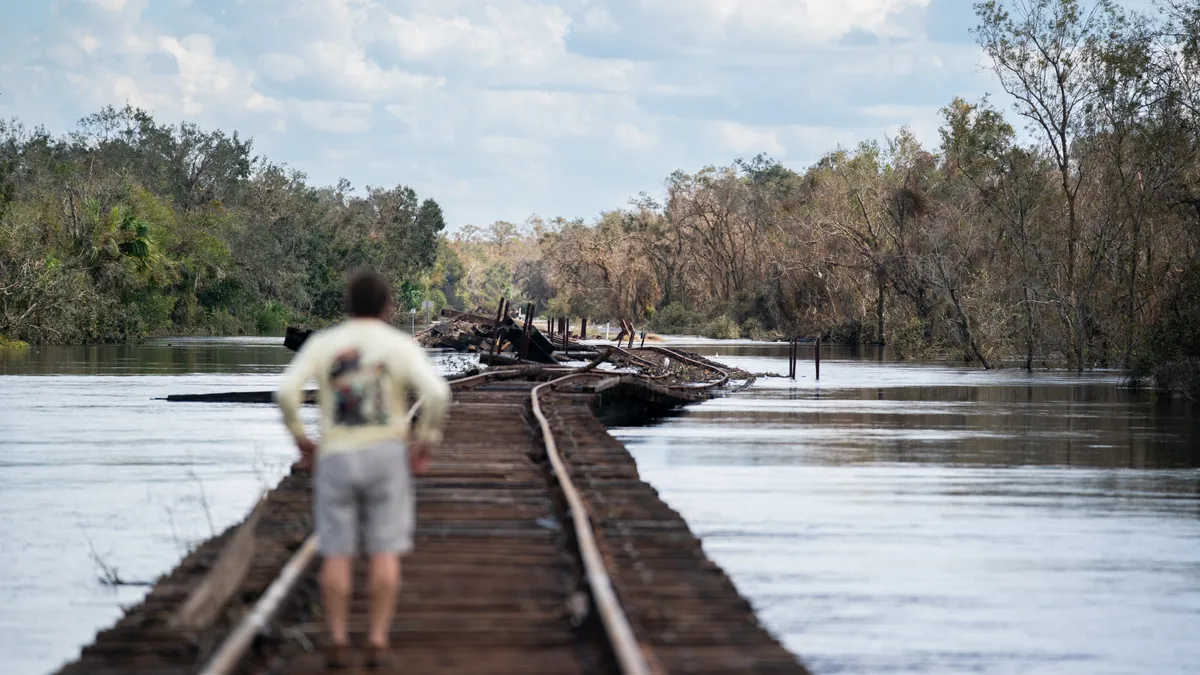Editor’s note: Want to help? The American Logistics Aid Network has a list of supplies and services in need due to Hurricane Ian. Take a look.
National supply chains largely avoided the most feared impacts of Hurricane Ian, with disruptions expected to be far less than the extent of previous disasters.
Ian devastated southwest Florida, with power outages, flooding and the temporary shutdown of transportation infrastructure all expected to lead to delays and higher costs for businesses. Still, the impact of the hurricane won’t reverberate through supply chains to the same degree as the Texas deep freeze last year, which took 80% of U.S. basic organic chemicals capacity offline.
“Given the geographies involved with Hurricane Ian, we're not looking at anything nearly of similar magnitude here,” said Jason Miller, associate professor of supply chain management at Michigan State University.
So far, the storm has significantly impacted Florida’s citrus producers but otherwise appears to have dealt only glancing blows to other major industries and interstate transportation. Risk modeler Karen Clark & Company estimates overall economic damage to top $100 billion, the largest hurricane loss in Florida history.
A section of I-75 in Florida that was submerged under water reopened after a few days, while major freight railroads reported little to no damage. CSX resumed service within days, and Norfolk Southern told Supply Chain Dive in an email that its network experienced no impact.
Ian also largely spared Florida’s expansive fertilizer industry, despite fears that the hurricane would disrupt production at a time of high prices and short supply. Florida produces an estimated 80% of the nation’s phosphates, a key input in fertilizer.
Mosaic, one of the world’s largest producers of phosphate, said in a statement it expects production to be down 200,000-250,000 tons after Ian caused modest damage to facilities and infrastructure. A spokesperson for manufacturer Nutrien told Supply Chain Dive in an email that “we dodged the hurricane,” and that sites remained operational in Florida, North Carolina, Louisiana and Georgia.
While many supply chains avoided major disruption, businesses in high-tech, automotive and medical industries could see some delays due to disruptions to their suppliers or transportation providers. The storm’s path swept through thousands of supplier sites responsible for parts used in semiconductors, pharmaceuticals, chemicals, plastics and food, according to Bindiya Vakil, CEO of risk modeler Resilinc. Shipments are also sometimes delayed as trucks are diverted to assist in relief efforts.
“Companies that don't know that they have a supplier who had a factory in Florida could potentially be impacted weeks down the road,” she said.
Industrial supplier Fastenal has already reported delays, expecting some financial impact associated with the storm. President and CEO Dan Florness said in an earnings call last Thursday that Ian “essentially pushed some business out of September and into October.”
While it’s unlikely the storm will have a major impact on supply chains, it’s less clear whether the supply chain disruptions of the last few years will hamper Florida’s recovery efforts. The construction industry has grappled with soaring prices and material shortages, often leading to project delays.
The deadly storm caused billions of dollars in property damage, displaced residents from their homes and claimed more than 100 lives and is likely to further stress housing supply. Florida, along with the rest of the country, has struggled to fill construction jobs and higher demand for labor stands to cause ripple effects within the industry.
“One sort of wildcard that we don't fully understand is how rapid the recovery will be because we still are seeing such shortages of materials and labor is very tight,” said Miller, who is also interim chairperson for the Department of Supply Chain Management at Michigan State University’s Eli Broad College of Business. “So it's a little unclear how recovery efforts will compare to times where the was more slack in the economy.”















